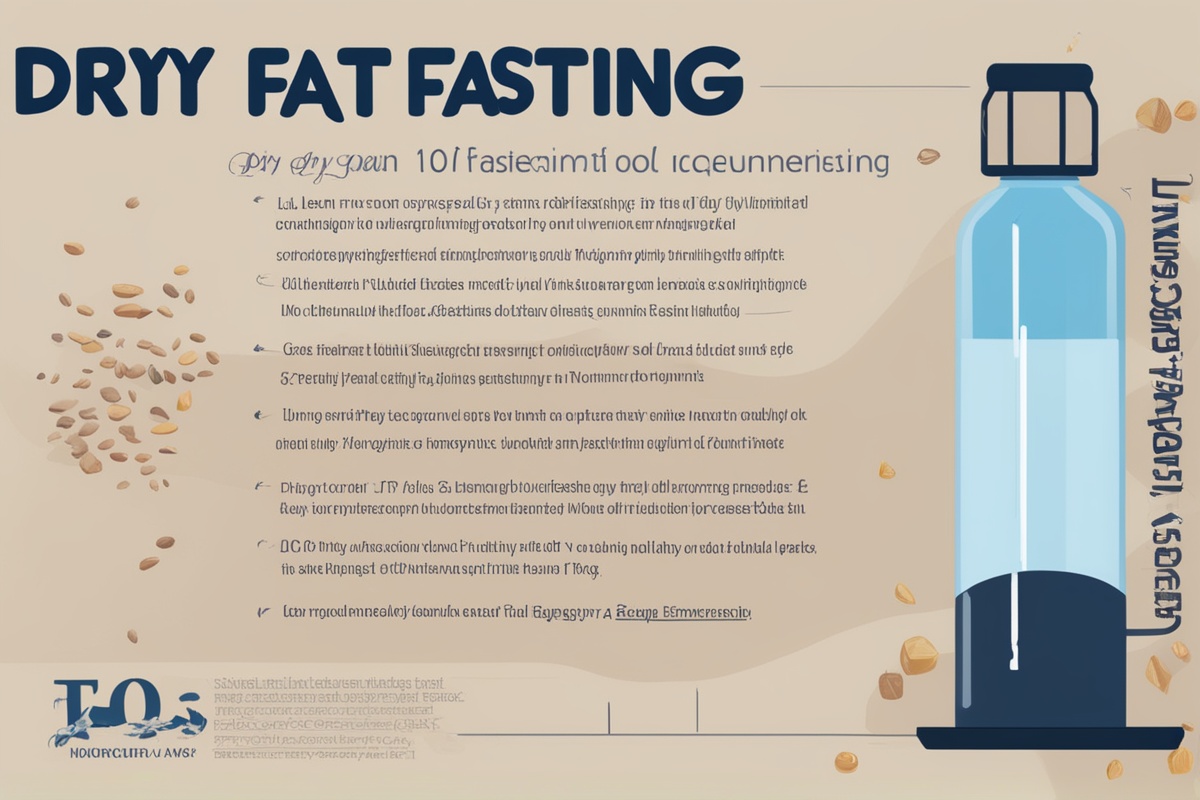Have you ever wondered if there’s a fasting method that pushes the boundaries beyond traditional water fasting? Enter dry fasting—a practice that involves abstaining from both food and water for a set period. If you’re curious about how to dry fast safely and effectively, you’ve come to the right place. This guide will walk you through the ins and outs of dry fasting, blending scientific insights with practical advice to help you decide if it’s right for you. Whether you’re a seasoned faster or a complete newbie, we’ll explore the potential benefits, risks, and step-by-step tips to ensure you approach this intense practice with confidence and care.
What Is Dry Fasting?
Dry fasting is a form of fasting where you refrain from consuming any food or liquids, including water, for a specific duration. Unlike intermittent fasting or water fasting, which allow hydration, dry fasting takes deprivation to another level. Historically, it has roots in various cultural and religious practices, such as Ramadan, where participants often avoid water during daylight hours. Today, many people are exploring how to dry fast for potential health benefits like detoxification, weight loss, and cellular repair. However, it’s not without controversy—medical experts caution that prolonged dry fasting can lead to dehydration and other health risks if not done properly.
The Science Behind Dry Fasting
So, what happens to your body when you dry fast? The science is both fascinating and complex. When you abstain from food and water, your body enters a state of ketosis much faster than with water fasting. Ketosis is when your body burns fat for fuel, producing ketones as an energy source. Some proponents claim that dry fasting accelerates autophagy—a process where cells clean out damaged components—potentially reducing inflammation and promoting longevity. A 2019 study published in the journal Nutrients suggests that fasting, in general, may support metabolic health, though specific research on dry fasting is limited. Without water, your body also conserves fluids by reducing urine output and drawing moisture from fat stores, which is why some call it a “deep detox.” However, dehydration remains a real concern, as the body loses water through sweat, breath, and other functions.
Benefits of Learning How to Dry Fast
Why would anyone willingly skip water alongside food? The potential benefits of dry fasting are a big draw for many. While anecdotal evidence abounds, some benefits are backed by emerging science around fasting in general. Here’s a quick rundown of why people are eager to learn how to dry fast safely:
- Enhanced Fat Loss: Without water to bloat tissues, some claim dry fasting speeds up fat burning, though results vary.
- Detoxification: Proponents believe it helps the body eliminate toxins more effectively by forcing it to recycle internal water.
- Mental Clarity: Many report heightened focus during dry fasts, possibly due to ketone production.
- Spiritual Connection: For some, dry fasting aligns with spiritual practices, fostering discipline and mindfulness.
Risks and Precautions of Dry Fasting
Before diving into how to start dry fasting, it’s critical to understand the risks. Dehydration is the most immediate danger—without water, your body can’t regulate temperature or maintain organ function properly. Symptoms like dizziness, fatigue, and headaches can set in quickly. Prolonged dry fasting (beyond 24–48 hours for most people) may also stress the kidneys and heart. It’s not suitable for everyone, especially those with medical conditions like diabetes or hypertension. Always consult a healthcare provider before attempting a dry fast, and never push beyond your body’s limits. Listening to your body is key to avoiding serious complications.
How to Dry Fast Safely: Step-by-Step Tips
Ready to try dry fasting? Let’s break down how to dry fast effectively with a focus on safety. This isn’t a practice to jump into without preparation, so follow these actionable steps to minimize risks and maximize benefits. The goal is to challenge your body without harming it, so take a gradual approach, especially if you’re new to fasting altogether.
- Start Small: Begin with a short dry fast of 12–16 hours, ideally overnight, to test your body’s response.
- Hydrate Beforehand: Drink plenty of water in the days leading up to your fast to ensure you’re well-hydrated at the start.
- Choose the Right Time: Pick a day when you can rest and avoid strenuous activity or hot weather to reduce water loss.
- Break the Fast Gently: Reintroduce water slowly with small sips, followed by light, hydrating foods like watermelon or broth.
- Monitor Symptoms: Stop immediately if you feel faint, nauseous, or experience rapid heartbeat—safety first!
Remember, dry fasting isn’t a competition. Even a short fast can offer benefits without the risks of longer durations. If you’re unsure about how to prepare for dry fasting, consider starting with intermittent fasting or water fasting to build your tolerance.
Who Should Avoid Dry Fasting?
While learning how to dry fast can be intriguing, it’s not for everyone. Certain groups should steer clear due to heightened risks. If you fall into any of these categories, consult a doctor or stick to gentler fasting methods. Dry fasting requires a baseline of good health and shouldn’t be attempted if your body is already under stress. It’s better to prioritize safety over curiosity when it comes to such an intense practice.
In conclusion, understanding how to dry fast opens up a unique approach to health and wellness, but it’s not a one-size-fits-all solution. With potential benefits like fat loss, detoxification, and mental clarity, dry fasting can be a powerful tool when done correctly. However, the risks of dehydration and organ stress mean it requires careful preparation, short durations, and constant self-monitoring. Whether you’re exploring dry fasting benefits for physical or spiritual reasons, start small, stay informed, and always prioritize your well-being. Have you tried dry fasting, or are you considering it? Share your thoughts or questions below—I’d love to hear about your journey!






